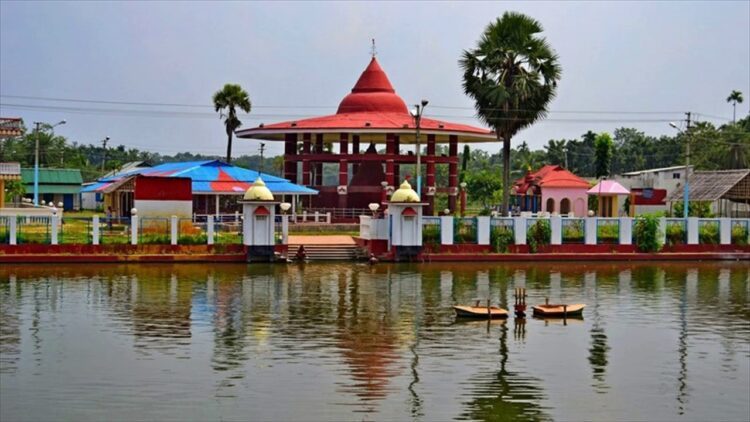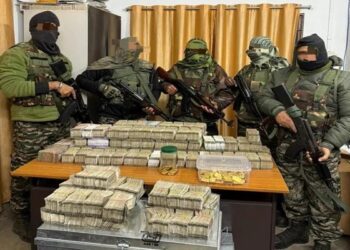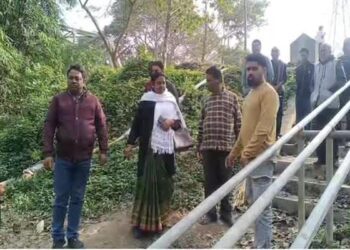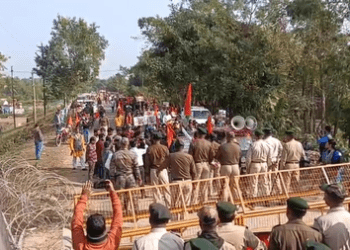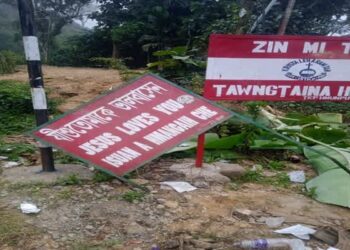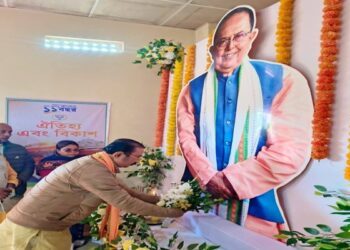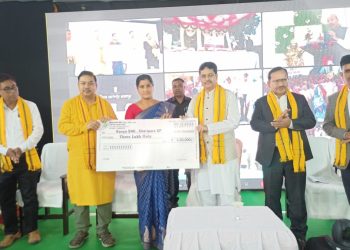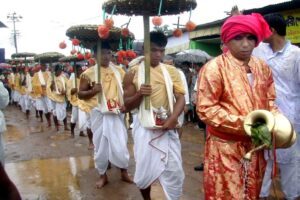
The Kharchi Puja, the traditional union festival of Tripura, has commenced today with great zeal and festive spirit, despite the communal and political tension in the state. This vibrant celebration spans seven days and is held at the Fourteen Deity Temple in Khairpur, formerly old Agartala. Kharchi Puja, also known as Fourteenth Deity Puja, honours the fourteen protector deities of Tripura, who are considered the family deities of the Tripura kings.
The worshippers involved in the festival are known as Deorai, and the chief priest is called Chantai. The festival’s origins trace back to 1760 AD, when Maharaja Krishna Kishore Manikya initiated the worship of the fourteen deities in the old haveli. The significance of Kharchi Puja grew over time, and after Tripura’s accession to India in 1948, the Tripura government took on the responsibility of organising the puja and the accompanying fair.
The fourteen deities honoured during Kharchi Puja are Lampra, Bikhata, Burasa, Thumnairok, Bonirok, Sangrongma, Akhata, Mwtaikotor, Mailuma, Khuluma, Swkalmwtai, Blisuma, and Twima. The deities are carried in a grand procession to the sacred river for a ritual bath, symbolising purification. The Tripura Police band marched along with the procession, performing an armed salute on the grand opening day, adding to the ceremonial grandeur.
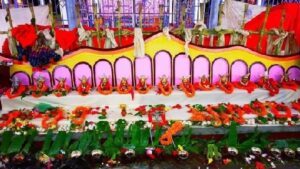
Each day of Kharchi Puja is marked by various cultural events, including traditional dances, music performances, and rituals that attract large crowds of devotees and tourists alike. A significant aspect of the festival is the ceremonial bathing of the deities in the sacred river, followed by offerings of flowers, fruits, and other items.
The fair organised during Kharchi Puja is a major attraction, featuring a wide array of stalls selling local handicrafts, food, and other goods. This vibrant marketplace becomes a hub of activity, drawing people from all over the region.
Kharchi Puja is not only a religious event but also a celebration of Tripura’s rich cultural heritage. It serves as a reminder of the state’s royal history and its deep-rooted traditions, making it a significant occasion for the people of Tripura. Despite
the prevailing communal and political unrest, the festival’s joyous and festive nature has brought the community together in unity and celebration.
The festival begins with the invocation of the fourteen deities, seeking their blessings for prosperity and protection. The deities are taken from the temple to the river for a ritual bath, symbolising purification. This is followed by a grand procession back to the temple, accompanied by the sounds of traditional drums and the chanting of hymns. Devotees participate in the procession with great enthusiasm, reflecting the deep spiritual connection they have with the deities.
Once the deities are back in the temple, the priest, or Chantai, conducts the main rituals. Offerings of flowers, fruits, and other items are made to the deities, and special prayers are recited. The temple premises are decorated with vibrant colours, and the air is filled with the fragrance of incense and flowers. This creates an atmosphere of divine presence and spiritual upliftment.
The cultural events held during Kharchi Puja showcase the rich artistic heritage of Tripura. Traditional dance forms like Hojagiri and Garia are performed by local artists, captivating the audience with their grace and rhythm. Music performances feature traditional instruments like the sumui, kham, and sarinda, creating a melodious backdrop to the festivities. These performances not only entertain but also educate the younger generation about their cultural roots.
One of the highlights of the festival is the large fair that is set up near the temple. The fairground becomes a bustling marketplace, with stalls selling a variety of goods. Local artisans display their handicrafts, including bamboo and cane products, pottery, and textiles. Food stalls offer a range of traditional Tripuri delicacies, providing a culinary delight for visitors. The fair also includes amusement rides and games, making it a fun-filled experience for families.
Despite the current political and communal tensions, Kharchi Puja serves as a beacon of hope and unity for the people of Tripura. The festival brings together individuals from different communities and backgrounds, fostering a sense of togetherness and harmony. It is a time for people to set aside their differences and celebrate their shared cultural heritage.
The state government and local authorities have made extensive arrangements to ensure the smooth conduct of the festival. Security measures have been heightened to maintain peace and order, and efforts have been made to provide necessary amenities to the visitors. The active participation of the community and the support of the authorities highlight the collective commitment to preserving and promoting Tripura’s cultural traditions.

Kharchi Puja is not just a religious observance; it is a celebration of the rich cultural tapestry that defines Tripura. It is a testament to the enduring legacy of the Tripura kings and their devotion to the fourteen deities. The festival’s ability to unite people and foster a sense of community spirit makes it a cherished and significant event in the state’s cultural calendar.
As Kharchi Puja continues over the next seven days, it will undoubtedly leave an indelible mark on the hearts and minds of all those who participate. The vibrant celebrations, the spiritual rituals, and the cultural performances collectively create an experience that is both enriching and uplifting. Kharchi Puja stands as a proud symbol of Tripura’s heritage, reflecting the state’s enduring traditions and the resilience of its people.


